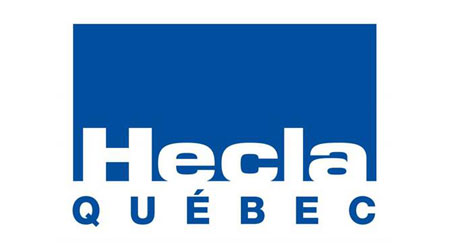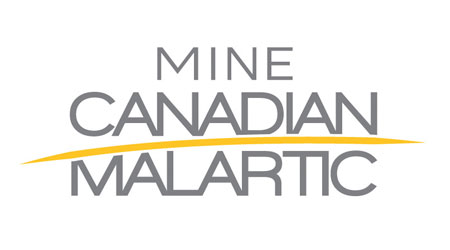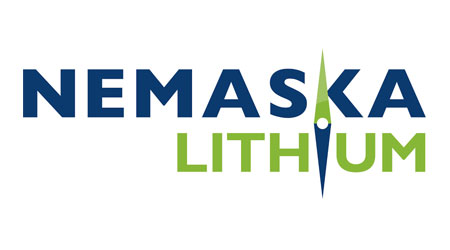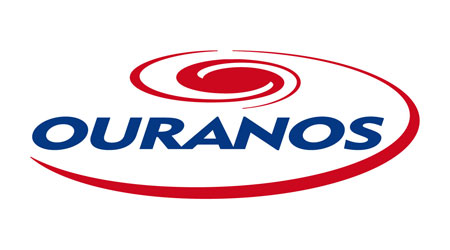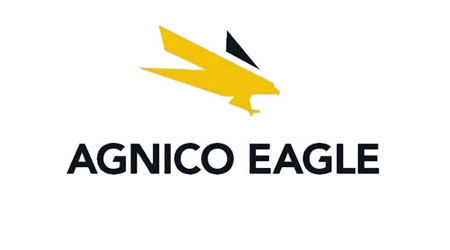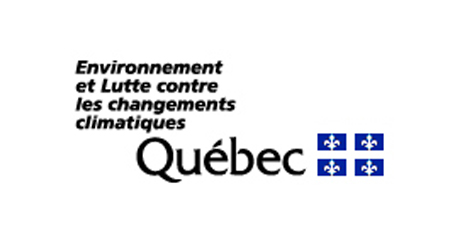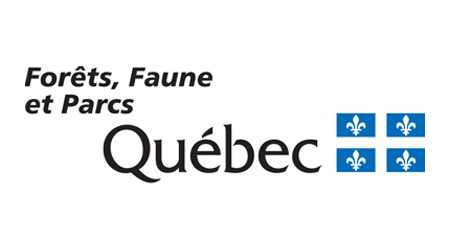
NSERC-UQAT Insdustrial Research Chair on northern biodiversity in a mining context
Partners
Partners
NSERC - CRSNG
Natural Sciences and Engineering Research Council of Canada - Conseil de recherches en sciences naturelles et en génie du Canada
HECLA QUÉBEC - Casa Berardi
For Hecla Québec, the company's social responsibility is based on three pillars: health and safety programs for our workers, community involvement and, of course, respect for the environment. These are also the three elements that define how we manage our business and who we are.
We also strive to use advanced mining technologies to minimize our impact during exploration, development and operations, and then restore the sites that have hosted our projects to allow productive use of the land once mining activities are completed. We constantly seek to innovate to develop new methods that allow us to coexist with nature while limiting the footprint of our activities. Hecla Québec's participation in the NSERC-UQAT Industrial Chair on Northern Biodiversity in a Mining Context is a good example of this desire to do things well for present and future generations.
Northern environments represent territories rich in natural resources, both biological and mineral. That's why it's important to improve knowledge about biodiversity to define sustainable development strategies. Work on the ecological classification of wetlands in the James Bay region, for their wildlife and flora aspects, carried out at the Casa Berardi mine, will certainly contribute to enrich this knowledge. This data collected by the NSERC-UQAT Industrial Chair on Northern Biodiversity in Mining Context team will be used to support our efforts to better plan and develop future open pits, tailings, waste rock pile, and overburden storage.
MINE CANADIAN MALARTIC
Pour Mine Canadian Malartic (MCM), la mission de la Chaire qui est de générer et de diffuser des connaissances sur la biodiversité nordique afin de développer des stratégies visant à réduire l’empreinte écologique d’une mine tout au long de son cycle de vie, cadre parfaitement dans son objectif de développement durable de ses opérations.
Les travaux de la Chaire sont d’intérêt pour MCM, notamment pour ses thèmes de recherche tel que l’« Utilisation des milieux humides miniers par la sauvagine » et « Diminuer les impacts cumulatifs sur les services écosystémiques fournis par la biodiversité ». L’intégration de la connaissance qui découlera des ces initiatives de recherche permettra à notre entreprise l’application de méthodes innovantes tant dans ses opérations courantes que lors de la phase de restauration minière, tout en permettant l’intégration d’éléments clés de recherche de la Chaire tel que les changements climatiques et l’inclusion à la fois des connaissances scientifiques et traditionnelles.
L’acquisition de connaissances dans ces domaines sera donc d’une grande utilité pour MCM dans sa volonté de poursuivre ses opérations de façon responsable tout en lui permettant de soutenir le développement des connaissances, et ce, avec le support de l’UQAT et du CRSNG.
STORNOWAY
Stornoway's contribution to the Chair aims to promote the acquisition of knowledge related to the hydrological and biogeochemical functions of peatlands in a climate change context. These functions are still largely unknown in the boreal region and yet they have a crucial importance in the development of northern Quebec, both for social and cultural reasons (use of the territory by the Cree Nation) and economic reasons (flooding of infrastructures, erosion of roads).
For Stornoway, this approach to acquiring knowledge about wetlands in the region was proposed as a compensation project. The project will lead to the development of a decision support tool that will be proposed from the research results. This will contribute to target the most appropriate ecological services and locations for compensation.
The risk management tools that will emerge from all this new knowledge will better guide the development of northern Quebec. Thus, the potential for effectiveness of future proposals for compensation measures in the northern environment will be better assessed, going through a process of ecological planning for the development of the territory.
NEMASKA LITHIUM
The Whabouchi Mine Project being located in the boreal region, more specifically in the James Bay Lowlands ecological region, the protection and respect of both social and biophysical aspects of the environment are of high importance for Nemaska Lithium. As such, the Canadian Environmental Assessment Agency (CEAA), the Canadian Minister of Environment, the Cree-Quebec Review Committee (COMEX) as well as Quebec’s Minister of Sustainable Development, Environment and the Fight against Climate Change (MDDELCC) all recognized Nemaska Lithium’s efforts to identify and mitigate the potential impacts associated with its project by issuing all required authorizations for the Whabouchi Mine Project to move forward.
Among the conditions included in the aforementioned authorizations is the obligation for Nemaska Lithium to elaborate and implement a Wetland Compensation Plan based on the concept of ecological value. Thus, Nemaska Lithium has to compensate wetland losses caused by its mine project and, to do so, it must first establish the ecological value of the impacted wetlands. However, in Quebec, there are no adequate criteria to define the ecological value of wetlands, especially peatlands, located in the boreal region as all criteria used by the MDDELCC were determined for the St-Lawrence Valley region in Southern Quebec.
What Nemaska Lithium has therefore proposed to the MDDELCC is the elaboration and completion of a scientific research program which would aim specifically at determining social and biophysical criteria to determine the ecological value of boreal peatlands in the Eeyou Istchee James Bay region. Such a research program would act as Nemaska Lithium’s Wetland Compensation Plan.
The Research Chair in Northern Biodiversity in a Mining Context is, in our opinion, a comprehensive and perfectly-suited answer to the problem Nemaska Lithium is experiencing, as well as any other mining company developing projects in Northern Quebec. Such scientific works definitely aim at filling significant gaps in our knowledge of boreal peatlands and improving how project development can be done in the North in a sustainable way. It represents a direct solution to a problem all industrial project proponents are or will be experiencing as project development moves forward, especially in the context of Quebec’s Plan Nord.
OURANOS
Interest in Chair Programmation, Impact / Expected Applications and Ouranos Contribution to the Chair:
Ouranos is a science consortium on climate change bringing together a broad network of partners from governments, universities, municipalities, and the private sector. The consortium produces simulations and climate scenarios for Quebec and supports the acquisition of knowledge on the impacts of climate change and the identification of socio-economic and environmental vulnerabilities in different sectors of interest for Quebec society. Ouranos' mission is to inform stakeholders and decision makers about climate change and help them identify and implement climate change adaptation strategies and actions.
The Chair’s work is of great interest to Ouranos, particularly for its "Ecosystems and Biodiversity" and "Nordic Environment" programs. Indeed, the results of the research projects conducted in the Chair will contribute towards adaptation and identification of vulnerabilities to climate change, notably by contributing to a better understanding of the evolution of northern wetlands with climate change, their importance to local populations, and the cumulative impacts of climate change with mining development. Ultimately, these results will help governments and First Nation communities to adapt to climate change by providing them with ecological planning tools that integrate the effects of climate change.
More specifically, Ouranos contributes to the project that studies the vulnerability to climate change of wetlands and their plants in Eeyou-Istchee James Bay. This contribution is materialized through the financial support of a doctoral student and intern students, and it is accompanied by technical support and provision of expertise and climate scenarios. A representative of Ouranos also sits on the strategic committee of the Chair.
AGNICO EAGLE
The development of responsible mining projects inevitably involves knowledge and conservation of biodiversity. Through its active involvement in the NSERC-UQAT Industrial Chair on Biodiversity in Mining, Agnico Eagle aims to contribute positively to the preservation of biological diversity in the environments in which we operate. This collaboration is part of our commitment to sustainable development. The knowledge gained through this initiative will allow us to better integrate the notion of biodiversity into the planning of our projects and activities. We will be better equipped to avoid, reduce, or compensate, when necessary, the potential impacts to critical habitats and species. The knowledge transferred through the work of the Chair will allow us to stay abreast of innovative practices in order to ensure our leadership in responsible mining development. Topics related to revegetation and ecosystem conservation are of particular interest to us, as well as anything related to precarious species, invasive species, and climate change.
MINISTRY OF THE ENVIRONMENT AND THE FIGHT AGAINST ClIMATE CHANGE (MELCC)
Responsible for implementing the Environment Quality Act (EQA), the Ministry of Environment and the Fight against Climate Change (MELCC) must deliver authorisations prior to any mining projects, the nature of which varies from advanced exploration to site restoration. When analyzing authorization requests, it ensures that projects comply with applicable laws and regulations, in order to minimize their impact on the environment. In addition, in order to support the application of the EQA, the MELCC has the mandate to develop regulations, guides and directives related to the environmental management of mining activities.
Ongoing research, such as determining the extent of mine impacts and developing an ecological planning tool for wetlands, is of interest to the Ministry, because it is aimed to reduce the ecological footprint of mining and, as a result, enhance environmental protection. Research on the northern biodiversity will enable the Ministry to define relevant indicators for monitoring and protection of this environment in order to reduce the impacts associated with mining. The acquisition of knowledge in these areas will be very useful for the MELCC, which produces several guidelines to regulate the mining activities.
MINISTÈRE DES FORÊTS, DE LA FAUNE ET DES PARCS
La Direction de la gestion des forêts du Nord-du-Québec est une direction régionale du ministère des Forêts, de la Faune et des Parcs (MFFP). Nous assurons le bon déroulement des opérations du MFFP, entre autres par la réalisation des plans d’aménagement forestier intégré (PAFI) et le suivi et contrôle des opérations en région. En nous appuyant sur des connaissances de pointe, nous nous assurons d’une gestion durable de l’ensemble des ressources trouvées en milieu forestier.
La récolte de la forêt boréale humide est une activité courante dans la région du Nord-du-Québec. Comme il est précisé dans la Stratégie d’aménagement durable des forêts (SADF), le maintien de la diversité biologique est un objectif que nous visons à atteindre par la planification forestière intégrée. Nous avons donc un intérêt particulier à améliorer nos connaissances sur la valeur des tourbières boisées, leurs richesses et leurs contributions respectives à la diversité biologique. La connaissance qui sera générée par les travaux de la Chaire institutionnelle sur la biodiversité nordique en contexte minier nous permettra de mieux cibler les secteurs où il faudra adapter l’aménagement forestier. Pour ce faire, nous disposons d’outils de conservation, comme l’identification de milieux humides d’intérêt, d’écosystèmes forestiers exceptionnels et de refuges biologiques, mais aussi de l’application de mesures d’atténuation ciblées pour maintenir des espèces rares ou ayant un statut précaire. La documentation sur l’importance et l’utilisation de ces milieux humides par les Premières nations donnera une perspective supplémentaire qui permettra aux planificateurs d’être mieux outillés pour l’élaboration des PAFI et favorisera l’acceptabilité sociale de ceux-ci.
PIKOGAN
The Abitibiwinni First Nation actively participates in the management of the resources of its territory through its Department of Land and Environment. In order to properly frame agreements negotiated with the government and certain mining and forestry companies, we collect data related to occupation and land use, both historically and contemporaneously.
These data often allow us to answer several questions during the consultation period. When we talk about consultation and accommodation, the question we really ask ourselves is who is consulting who?
Although traditional knowledge and territorial occupation are the major issues at the heart of our concerns, the community is proud of its involvement in environmental scientific research to maintain the health of ecosystems and other areas inherent to our traditional activities.
The anthropogenic upheavals and the climatic change effects on the territory have lead us to change our way of life, to see the territory in different ways, and to change the activities that we exert there. The fauna, the flora, the topography, the streams, everything changes and the adaptation is sometimes longer than the change itself. That is why the Abitibiwinni First Nation works with UQAT on various research projects. The research projects that are presented to us must first respond to a need in the community so that we can consider participating.
The NSERC-UQAT Industrial Chair on Northern Biodiversity in Mining Context is one of the tools available through UQAT to help increase our knowledge in this field.
CREE NATION
The Cree communities of northern Quebec are located on the James Bay territory called “Eeyou Istchee” which means “land of the people”. The Cree population have relied on the biodiversity of the land for their subsistence and traditional way of life for thousands of years. They depend on the long-term integrity of the region to exercise their harvesting rights, which are guaranteed, and must be protected, in accordance to sections 22 and 24 of the James Bay and Northern Quebec Agreement.
The Eeyou Istchee territory is characterized by the presence of numerous lakes, rivers, marshes and ponds that provide important habitats for a great diversity of flora and fauna. As guardian of the land, the Cree are well aware of the vital role of such habitats and are very concerned about their conservation. Moreover, the northern regions have been subject to continuous development pressure for many years, such as mining projects, which may be accelerated with the province’s more recent development initiatives (e.g. Plan Nord).
The NSERC-UQAT Industrial Chair on Biodiversity in a Mining Context represents an opportunity to address these concerns and develop a new framework better adapted to a northern Québec context to minimize the current and future mining impacts on biodiversity. The Cree Nation Government has therefore requested to be an active partner in the discussions orienting the related research projects. More specifically, there is a need for developing an ecological planning tool that factors in the species distribution, indigenous priorities, and climate change. The Cree communities have long been concerned about the cumulative environmental impacts and what that entails for species of key importance to the Cree communities, an issue addressed in the Chair objectives. Furthermore, the Cree Nation has a wealth of information on its traditional lands, including both scientific and traditional knowledge, which would most benefit the project by providing a better understanding on the region’s biodiversity and how to better protect it.
Information
Nicole Fenton, professor titular of the NSERC-UQAT Industrial Research Chair on northern biodiversity in a mining context
Forest Research Institute (FR)
Telephone: 819 762-0971 poste 2312
Email: nicole.fenton@uqat.ca

